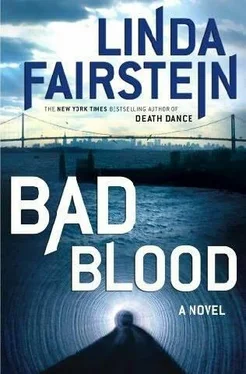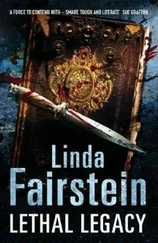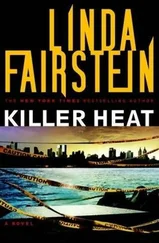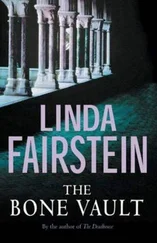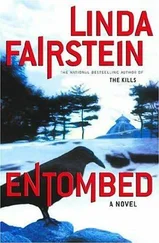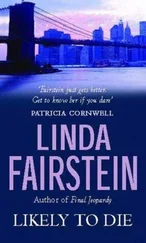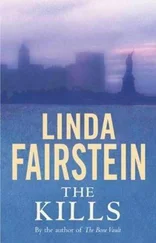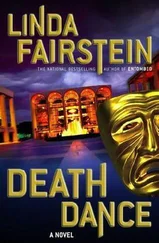“Why not? I thought…”
Mattie spread the reports in front of her. “For one thing, we had the severed digit,” she said, pointing to an eight-by-ten blowup of the large finger with its ragged edge.
“They just scraped skin cells off the surface of it, and of course, they also had a perfect print to match.”
“Duke Quillian had no record. No fingerprints on file with the NYPD. Mike checked that the first day.”
“Yes, but the union required all the sandhogs to be fingerprinted after 9/11. It was mandated as a security issue, for some of the jobs they had to work on near Ground Zero-rebuilding subway stations and such,” Mattie said. “The prints were delivered to the ME’s office within hours of the blast, so that confirmed his death.”
“All that confirmed,” Mike said, correcting Mattie, “is that it would be a struggle for him to use a rotary phone. It was only one finger.”
Mattie shook her head at Mike. “And the dental records. A piece of Quillian’s skull was picked up at the scene. That fragment was also matched to his dentist’s files.”
“So Duke’s dead, right?” I asked.
“Very dead, Alex,” Mattie said. “And I know we never do things fast enough for Mike, but you’ve got to remember the backlog we have. No one else was reported missing, so we knew we had the deceased-our three victims-identified.”
With the expansion of the capability of DNA to solve crimes-well beyond murders and sexual assaults-the lab was inundated with dozens of investigative requests a day, some of them presenting dozens of samples per case.
“Thousands of pieces of skin and tissue were collected in the debris from the tunnel,” Mattie went on. “The techs have been doing extractions on them as fast as they can, in between all the new work that’s brought in every day. They’ve been running samples in the robots. One of my guys got a result yesterday that had him stymied. It didn’t make sense to him, so he brought it to me to discuss last night, after Mercer left.”
“What didn’t make sense?” I asked.
“This-this anomaly.”
“Anomaly?”
Mike leaned over Mattie’s shoulder. “Yeah, Coop. Anomaly. That’s a scientific expression that usually translates as ‘Detective Chapman, you’re screwed.’ Show her.”
There were pages of reports from the various biologists who had worked on the tunnel samples. With the tip of her pen, Mattie pointed to the profiles that repeated themselves on different test results.
“Here’s Tobagan Number One, as we’ve called him.” His tissue fragments had been identified again and again from remains within the blast site.
She lifted her pen and moved to Tobagan #2, making the same point.
“This,” Mattie went on, “is the genetic profile of Duke Quillian. We obtained it, of course, from the skin cells of the finger that Mike recovered on the first day. It matches skin cells from microscopic pieces of flesh that were in the debris. There’s no question that Duke was blown to bits.”
“Then what’s the anomaly?” I asked.
“You can look at every single blood sample-hundreds of them-that we’ve been running these last two days to wind up the investigation. Not one of them-not one drop of blood-matches the DNA of Duke Quillian.”
“You’ve got the man’s skin, but you don’t have his blood?”
“Exactly, Alex.”
“Can you explain-”
“It turns out there is DNA from a fourth person,” Mattie said, wagging her pen in my face. “A different profile that several techs developed. Something that didn’t match to any of the deceased.”
“But there are no other reports of missing persons.”
“Right, there haven’t been any, and it’s actually much easier than that, Alex. It’s the DNA of a woman in this fourth profile,” Mattie said. “One peak only. Again, there’s no Y chromosome.”
“But there were no women working in the tunnel. It’s bad luck-the sandhogs won’t have it.”
“Don’t get ahead of yourself, Coop,” Mike said.
“The blood in the tunnel,” Mattie said, pushing several pieces of paper toward me. “You can see for yourself what I mean. This profile was sitting on my desk last night, right next to my folder on the Hassett case.”
She slid two pieces of paper together-one from Bex Hassett’s file and the other from the water tunnel evidence-and pointed to the alleles that aligned with each other at thirteen loci within the cell to create a distinctive genetic profile.
“You want to talk anomaly, Coop? The DNA in that blood sample from evidence in Water Tunnel Number Three-it’s a perfect match to the DNA of Trish Quillian.”
The windows in Anna Borowski’s office overlooked York Avenue, the stretch of East Side real estate from the Queensboro Bridge to Seventy-second Street-once tenements-now known as Hospital Row. It had taken us only twenty minutes to get here from the Office of the Chief Medical Examiner forty blocks downtown.
“What made you think to call me?” the doctor, whose medical specialty was blood cancers, asked Mike.
He had known Anna for several years, he told me on the ride uptown, from the time Valerie was in treatment. Mike had met his fiancée while he was giving blood at the Memorial Sloan-Kettering Cancer Center, where Val had undergone extensive chemotherapy, as well as her surgery.
“Bad blood, Doc. You know more about it than anyone in town.” Mike was looking out at the campus of Rockefeller University on the far side of the street. He turned back to the oncologist and flashed his familiar grin. “I figure I’ve given you a few pints of my best stuff. That maybe you’d go undercover for me. Get me a peek at the patient’s chart, at least.”
The tall, handsome woman, dressed in a lab coat, lowered the tortoiseshell frames of her reading glasses from the top of her head and opened the thick sheaf of medical records. “Am I just easy or does that smile work on everyone?” she asked me.
“The perps don’t go for it,” I said. “Most of the rest of us do.”
“Duke Quillian?” Mike asked.
“On the promise your subpoena will follow shortly.”
“You got it.”
She adjusted her glasses and got to work reading the papers in the blue folder.
“Acute leukemia, Mike. His chart begins with the usual symptoms. Fatigue, frequent fevers and infections. Nosebleeds and bleeding gums. By the second or third round of antibiotics, the local doc-a family practitioner in the Bronx-drew some blood to be tested. Got the result, made the diagnosis, and sent Mr. Quillian to us. That’s the way the disease typically presents.”
“Don’t you have to pull all kinds of strings to get into these digs?” Mike asked.
Anna shook her head. “People think that, I guess. Your friend Duke-looks like he had perfectly good insurance coverage from his union. More important than that, there was no medical facility in the Bronx, where he lived, that did transplants in those days. I’m not sure there’s one now. This would be the only logical place for him to wind up.”
The word transplant caught my attention. “Duke Quillian had a transplant?”
“That was the only curable method of treating acute leukemia back in the days when he was ill, especially when the patients were as young as this guy.” Anna glanced down at the file. “Mid to late twenties.”
“What’s the process?” Mike asked.
“The patient is typed for the human leukocyte antigen-HLA. And all his family members are typed, too. Did he have siblings, this guy?”
“Yes,” we both said.
“There’s a one-in-four chance of matching a family member,” Anna said. “I’ve had cases with eight children, and none of them match the patient, although a few of them match each other. There’s a second reason we start with family.”
Читать дальше
